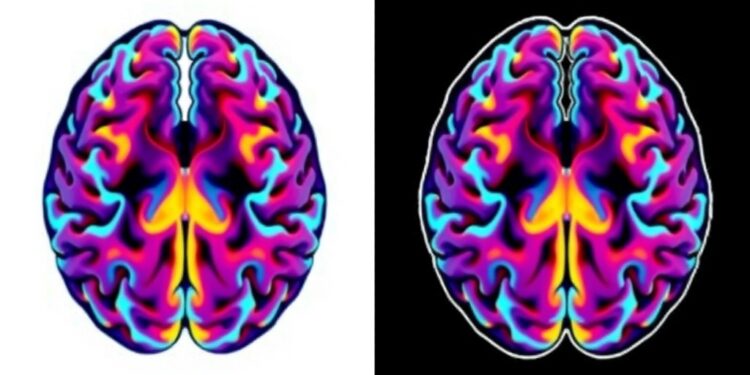A groundbreaking study funded by the National Institutes of Health (NIH) has uncovered critical insights into the neuroanatomical differences between adolescents who initiate substance use before the age of 15 and those who do not. This extensive research, drawing upon data from nearly 10,000 adolescents, emphasizes the complexity of factors—ranging from brain structures to genetics and environmental influences—that contribute to the nuanced landscape of substance use and addiction. One of the most significant findings of the study is that certain structural brain differences were evident even before any substance use took place. This revelation suggests that pre-existing neuroanatomical characteristics may predispose individuals to higher risks of early substance initiation.
Dr. Nora Volkow, the director of the National Institute on Drug Abuse (NIDA), highlighted the importance of this research by stating that it adds to the growing body of evidence linking brain structure to both vulnerability and resilience regarding substance use and addiction. This underscores the necessity of understanding the interplay of various factors that either contribute to or protect against the development of substance use disorders. Such insight is vital for crafting effective preventative strategies and implementing support systems for those at risk.
The study’s methodology involved a longitudinal analysis of the Adolescent Brain Cognitive Development Study (ABCD Study), which stands as the largest research initiative focused on brain development and health among children and adolescents in the United States. Researchers from Washington University in St. Louis utilized magnetic resonance imaging (MRI) scans of participants aged 9 to 11 and tracked their development over a three-year period. The research specifically monitored the initiation of substance use, considering alcohol, nicotine, cannabis, and other illicit drugs that are commonly associated with early adolescent experimentation.
Of the nearly 3,500 adolescents who reported substance use initiation prior to age 15, the overwhelming majority had tried alcohol, with significant overlap seen in those who also experimented with nicotine and cannabis. This intertwined use indicates the co-occurrence of various substances and emphasizes the necessity of examining the broader behavioral patterns associated with early initiation. The researchers found that these patterns were linked to marked differences in brain structure, both globally and regionally, particularly affecting the cortex—an area crucial for higher-level cognitive processes like decision-making, memory, and emotional regulation.
This comprehensive analysis revealed a notable increase in total brain volume and subcortical volume among those who initiated substance use early, alongside over thirty specific regional structural variances. Approximately 56% of the observed changes correlated specifically with cortical thickness, illustrating how the morphology of the brain is intricately connected to patterns of substance initiation. Interestingly, some of these differences appeared to be substance-specific, thus mandating a careful examination of how different types of substances impact brain structure.
Replicating these results in a post-hoc analysis, researchers discovered that many structural differences persisted even when accounting for participants who may have used substances prior to the collection of baseline MRI data. This finding strengthens the hypothesis that underlying neuroanatomical differences may exist independent of substance exposure. Consequently, the interpretation leans towards the possibility that these variations could serve as early indicators of susceptibility to substance use, marking an area ripe for further exploratory research.
In light of these findings, it becomes increasingly apparent that the relationship between brain structure and behavior is complex, particularly concerning sensation-seeking and impulsivity—behavioral traits often associated with early substance use. The authors of the study contend that continued efforts are necessary to delineate this relationship fully and to ascertain how variations in brain structure may translate into behavioral outcomes during adolescence.
Moreover, the breadth of data provided by the ABCD Study offers a rich context for understanding the factors influencing substance use. Compounded with other recent analyses illustrating how patterns of brain connectivity can predict early substance use initiation, the potential implications for preventative intervention become evident. Increased clarity around how factors such as environmental exposure and genetic predisposition modulate this relationship is essential for advancing our understanding of addiction science and developing targeted intervention strategies.
As researchers continue to explore the dynamic interplay of genetic, environmental, and neurodevelopmental factors, this study serves as a pivotal stepping stone in addiction science. The hope is that ongoing and future research utilizing expansive longitudinal datasets will foster new approaches in addressing substance use disorders and pave the way for fostering resilience in vulnerable populations.
In conclusion, the findings emerging from the ABCD study not only have the potential to reshape the framework of substance use intervention strategies but also underscore the need for an integrated understanding of how various factors converge within the realm of adolescent neurodevelopment. As researchers call for more comprehensive studies to assess these effects as participants continue to age and undergo further substance use experiences, the trajectory of addiction science appears poised to evolve significantly.
Subject of Research: Neuroanatomical differences related to substance use initiation
Article Title: Neuroanatomical variability and substance use initiation in late childhood and early adolescence
News Publication Date: [To be filled in based on publication date]
Web References: [To be filled in with URLs]
References: [To be filled in per citation style]
Image Credits: [To be filled in if applicable]
Keywords: Neuroanatomy, Substance Use, Adolescence, Brain Structure, Addiction, Cortical Thickness, MRI Research, Longitudinal Study





